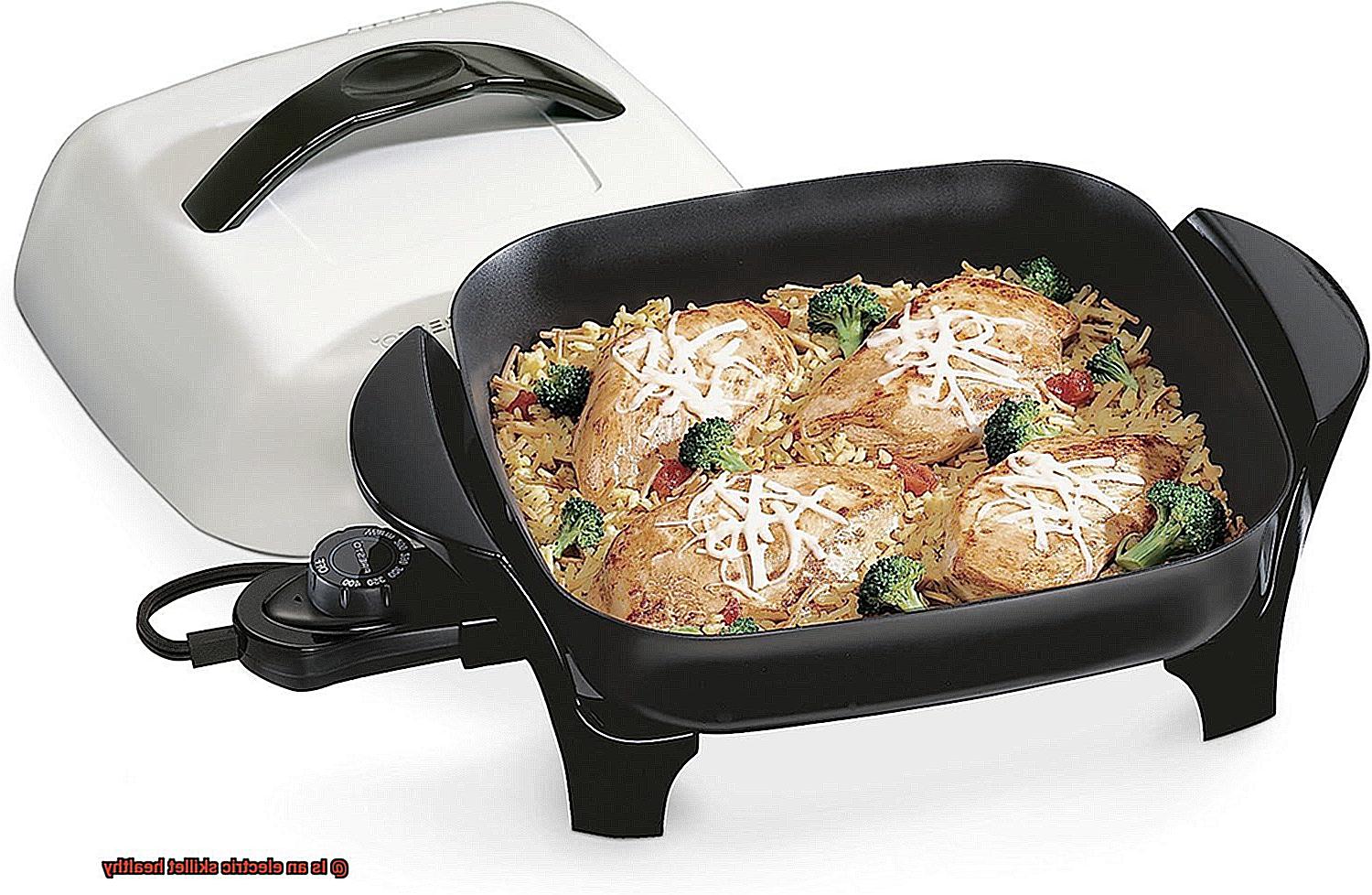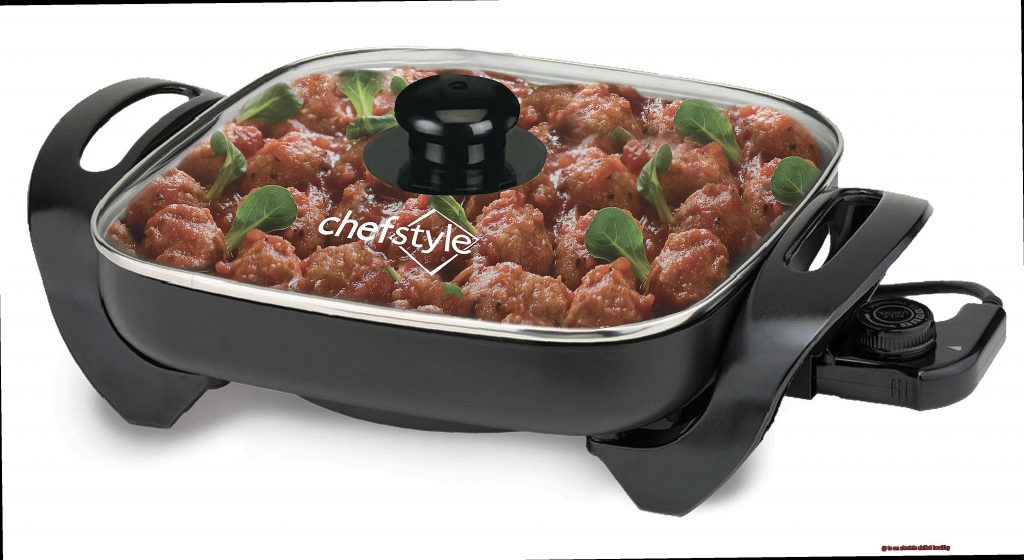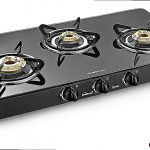Do you love the convenience of whipping up a quick and tasty meal with an electric skillet? As much as we all appreciate the ease of cooking on an electric skillet, it’s hard to ignore the question that lingers in our minds: is an electric skillet healthy?
While electric skillets are known for their speedy and even cooking, some people worry about the potential health risks. The high heat generated by these appliances could cause harmful chemicals to leach into your food.
So, what’s the verdict? Are electric skillets safe or not? In this blog post, we’ll delve deeper into the pros and cons of using an electric skillet. We’ll explore the potential health benefits and risks associated with this popular kitchen gadget. Plus, we’ll share some tips and tricks on how to use your electric skillet safely and effectively.
Get ready to discover everything you need to know about electric skillets and their impact on your health. Whether you’re a seasoned pro or just starting out, this post will provide valuable insights into making informed decisions about your cooking methods.
Contents
Benefits of Using an Electric Skillet
Electric skillets have been gaining popularity in modern kitchens due to their convenience and versatility. With different sizes and shapes to cater to various cooking needs, they offer numerous benefits that make them a healthy and convenient option for cooking.
Firstly, electric skillets cook food evenly, ensuring that the nutrients are retained. Unlike traditional stovetops with hot spots, electric skillets distribute heat uniformly across the cooking surface, making them an excellent option for healthy cooking.
Moreover, electric skillets are energy-efficient and use less energy compared to stovetops because they have a smaller surface area to heat up. Additionally, they maintain a consistent temperature, which saves energy by eliminating the need to adjust the heat continually.
In addition to being healthy and energy-efficient, electric skillets are versatile kitchen appliances that can be used for a variety of cooking tasks such as frying, sautéing, grilling, and even baking. Some models even come with interchangeable plates that can be used for different cooking purposes.
Another benefit of electric skillets is that they are portable and can be used anywhere with an electrical outlet. They are ideal for camping trips or outdoor events where access to a stove may be limited. You can also take them to potlucks or picnics to keep your food warm or cook dishes on the spot.
Lastly, electric skillets are easy to clean since they have a non-stick surface that makes cleaning up effortless. Just wipe it down with a damp cloth, and you’re done. Some models even come with removable parts that can be washed in the dishwasher.
Potential Health Risks Associated with Electric Skillets
As home cooks, we love our electric skillets for their convenience and efficiency. However, it’s important to be aware of the potential health risks associated with their use. As an expert on this topic, let me share some key things to keep in mind.
First and foremost, the non-stick coating found on many electric skillets can be a major concern. This coating may contain perfluorooctanoic acid (PFOA), which has been linked to serious health issues like cancer, liver damage, and thyroid disease. Although PFOA has been phased out of many products, it’s still important to check the label of your electric skillet to ensure it’s free from this harmful substance.
Another aspect to consider is cleanliness. Electric skillets must be cleaned thoroughly after each use to avoid harmful bacteria buildup that can lead to foodborne illnesses and other health issues. Make sure you’re cleaning your skillet properly and storing it in a dry place.
Lastly, it’s crucial to be mindful of the type of oil or fat used for cooking in an electric skillet. Some oils and fats can become unstable at high temperatures and release harmful chemicals into the air. This can be particularly problematic if you have respiratory issues or allergies. Opt for oils with a high smoke point such as avocado or coconut oil to minimize this risk.
Non-Stick Coating Safety
Many home cooks share your concerns, and for good reason. However, as an expert in “Non-Stick Coating Safety,” I’m here to shed some light on the topic and help you use your skillet safely.
Let’s start with the most common non-stick coating: Teflon. When heated above 570°F (300°C), Teflon can release toxic fumes that are harmful to both humans and pet birds. However, most electric skillets have temperature controls that keep them from reaching such high temperatures. As long as you use your skillet according to the manufacturer’s instructions and don’t overheat it, your non-stick coating should be safe to use.
But if you want to be extra cautious, consider choosing a skillet with a non-toxic coating, such as ceramic or silicone. These materials do not contain PFOA, a chemical linked to health problems. Ceramic and silicone coatings are also generally considered safer than Teflon.
Now, let’s get into the details of how to use your electric skillet safely:
- Follow the manufacturer’s instructions: It’s crucial to read and follow all instructions that come with your electric skillet, especially when it comes to safe usage and cleaning practices.
- Don’t overheat: Overheating your skillet can cause your non-stick coating to release toxic fumes. Make sure to keep an eye on the temperature control and never exceed the recommended temperature range.
- Use wooden or silicone utensils: Metal utensils can easily scratch non-stick coatings, leading to unsafe chemicals leaching into your food. Instead, use wooden or silicone utensils.
- Clean properly: Avoid harsh cleaning products and abrasive sponges that can damage your non-stick coating. Instead, use a mild dish soap and a soft sponge or cloth to clean your skillet.
Temperature Control for Even Cooking
Look no further than the electric skillet – the ultimate solution for temperature control and even cooking. As an expert in this field, I am here to share the importance of precise temperature control when using an electric skillet.
To ensure a healthy and evenly cooked meal, preheating your electric skillet is crucial. This step allows the skillet to heat evenly, which will ensure that your food will cook evenly as well. Once you add your food, make sure to adjust the temperature as needed to maintain a consistent cooking temperature.
One of the advantages of using an electric skillet is its ability to precisely control the temperature. Unlike stovetop cooking, where heat sources can fluctuate, electric skillets provide consistent heat, which guarantees that your food cooks evenly every time. Additionally, this feature enables you to cook at lower temperatures, retaining more nutrients in your food.
It’s important to note that not all electric skillets are created equal. When selecting an electric skillet, choose one with precise temperature controls and even heating. This will ensure that your food is cooked evenly every time, without any hot spots or cold spots.

Cleaning Your Electric Skillet to Avoid Contamination
However, to maintain its health and avoid contamination, proper cleaning of your electric skillet is crucial. By following some simple tips and tricks, you can ensure that your electric skillet remains healthy and free from bacteria while allowing you to cook delicious meals with peace of mind.
First and foremost, always unplug your electric skillet and let it cool down before starting the cleaning process. You don’t want to end up getting burned or damage the skillet’s non-stick coating. Once the skillet has cooled down, grab a soft sponge or cloth and start wiping down the interior of the skillet. Make sure to avoid using abrasive cleaners or scouring pads that can scratch the non-stick coating. These scratches can create grooves where bacteria can thrive and pose potential health hazards. Instead, use mild dish soap and warm water for regular cleaning.
For stubborn stains or burnt-on food, soak the skillet in warm water with a mild dish soap for a few minutes before scrubbing gently with a non-abrasive sponge. In case you are dealing with tough stains, try using baking soda and water to create a paste that can be applied to stubborn spots. The paste should be left to sit for a few minutes before wiping clean.
When cleaning the exterior of your electric skillet, be careful not to get water or cleaning solutions into the heating element or temperature control areas. Use a damp cloth or sponge with mild dish soap to wipe down the outside of the skillet.
It is also important to keep an eye out for any wear and tear on your electric skillet’s non-stick coating. If you notice any scratches or cracks, it might be time to replace your skillet to avoid potential health hazards.
To summarize, here’s a quick checklist for cleaning your electric skillet:
- Unplug and let it cool down before cleaning
- Use a soft sponge or cloth to wipe down the interior
- Avoid using abrasive cleaners or scouring pads
- Soak the skillet for stubborn stains or burnt-on food
- Use baking soda and water for tough stains
- Be careful not to get water or cleaning solutions into the heating element or temperature control areas while cleaning the exterior
- Check for wear and tear on the non-stick coating
The Pros and Cons of Electric Skillets
Then an electric skillet might be the solution you need. Electric skillets are versatile and can be used for a wide range of cooking methods, including frying, sautéing, searing, and grilling. However, before you make your purchase, it’s important to weigh the pros and cons.
Let’s start with the pros. One of the biggest advantages of using an electric skillet is its ability to provide even heat distribution. You don’t have to worry about your food being undercooked or overcooked in certain areas. Adjustable temperature controls allow you to cook your food at the desired temperature, saving time and energy. Plus, electric skillets are portable and can be moved around easily. You can take them with you on camping trips, picnics, or outdoor gatherings without worrying about access to a stove or oven.
However, electric skillets also have some disadvantages. One of the biggest drawbacks is that they require electricity to operate. This means that during power outages or in remote areas without access to electricity, they won’t work. Additionally, some electric skillets may not provide the same level of heat as a stovetop skillet. This could affect your ability to achieve a crispy texture on certain foods or properly sear meat.
When considering whether an electric skillet is right for you, it’s important to assess your needs and preferences. If you value even heat distribution and portability, then an electric skillet might be a great addition to your kitchen. However, if you frequently experience power outages or need high levels of heat for certain foods, then a stovetop skillet might be a better option.
To keep your electric skillet healthy and free from bacteria, follow proper cleaning techniques like using mild dish soap and avoiding abrasive cleaners. Remember that proper maintenance will extend the lifespan of your electric skillet.
Alternatives to Electric Skillets
Fortunately, there are several alternatives available that provide a healthier cooking experience. As an expert on this topic, I have researched and compiled a list of options that will satisfy all your cooking needs.
One alternative to electric skillets is cast iron skillets. This classic tool has been trusted for centuries due to its durability and excellent heat retention. Unlike electric skillets, cast iron skillets are free from any harmful chemicals or coatings. They can also be used on all types of stovetops, including induction, making them a versatile option for any kitchen.
Another great alternative is ceramic cookware. Made from natural materials like clay and sand, ceramic cookware is free from any harmful chemicals or coatings. In addition to being safe, it’s known for its non-stick properties, making it easier to cook with and clean up after. Plus, it comes in a variety of colors and designs, allowing you to add a touch of personality to your kitchen.
For those who prefer non-stick cooking surfaces, there are several safer options available. One such option is using a ceramic non-stick skillet. This type of skillet is made from a ceramic coating that’s free from PFOA and PTFE, two harmful chemicals commonly found in non-stick coatings. Another option is using a stainless steel skillet with a non-stick surface achieved through a process called “seasoning.” This involves coating the skillet with oil and heating it to create a natural non-stick surface.
Tips for Safely Cooking with an Electric Skillet
Cooking with an electric skillet can be a great way to prepare meals, but it’s important to prioritize safety while doing so. Here are some key tips to ensure that you’re cooking safely with your electric skillet:
Read the Manufacturer’s Instructions:
Before using your electric skillet, make sure you read the manufacturer’s instructions carefully. These instructions will provide you with essential information on how to use the skillet correctly and safely. This includes how to clean it properly, which temperature settings to use, and any safety precautions you need to take.
Proper Temperature Settings:
Electric skillets have different temperature settings, and it’s important to use the appropriate one for the food you’re cooking. Overcooking or undercooking food can lead to health risks, so make sure you’re using the right temperature for the dish you’re making.
Be Careful with Hot Oil:
When cooking with oil in your electric skillet, be mindful not to overheat it as this can cause it to ignite. Moreover, never leave hot oil unattended as it can be dangerous. Always use heat-resistant mitts or potholders when handling hot oil and other hot surfaces.
Keep the Skillet Clean:
Maintaining a clean electric skillet is essential in preventing bacteria from building up and causing foodborne illnesses. After each use, wash it thoroughly with soap and water, and avoid using abrasive materials that could scratch the surface of your skillet.
Use Proper Utensils:
Using utensils designed for non-stick surfaces is crucial when cooking with an electric skillet. Metal utensils can scratch your skillet’s surface, leading to faster wear and tear and potentially releasing harmful chemicals into your food.
kqA4itLG_lg” >
Conclusion
In conclusion, electric skillets offer a plethora of benefits that make them a convenient and healthy option for cooking. Their even heat distribution ensures that your meals are cooked to perfection every time, while their energy efficiency saves you money on your electricity bills. And let’s not forget their versatility – electric skillets can be used for anything from frying to baking.
However, it’s important to be aware of potential health risks associated with their use. The non-stick coating on some electric skillets can release harmful chemicals when overheated, which can be dangerous if ingested. It’s also crucial to keep your skillet clean to prevent bacteria from building up and causing foodborne illnesses.
To use your electric skillet safely, follow the manufacturer’s instructions and avoid overheating it. If you’re concerned about non-stick coating safety, consider choosing a skillet with a non-toxic coating like ceramic or silicone. Alternatively, cast iron or stainless steel skillets with a natural non-stick surface achieved through “seasoning” are also great alternatives.
Remember to always prioritize safety when cooking with an electric skillet by using proper temperature settings and being careful with hot oil. And don’t forget to use heat-resistant mitts or potholders to protect yourself from burns.
Overall, electric skillets can be a fantastic addition to any kitchen if used responsibly. By following these tips and taking precautions, you can enjoy the convenience and health benefits of cooking with an electric skillet while minimizing any potential risks.






